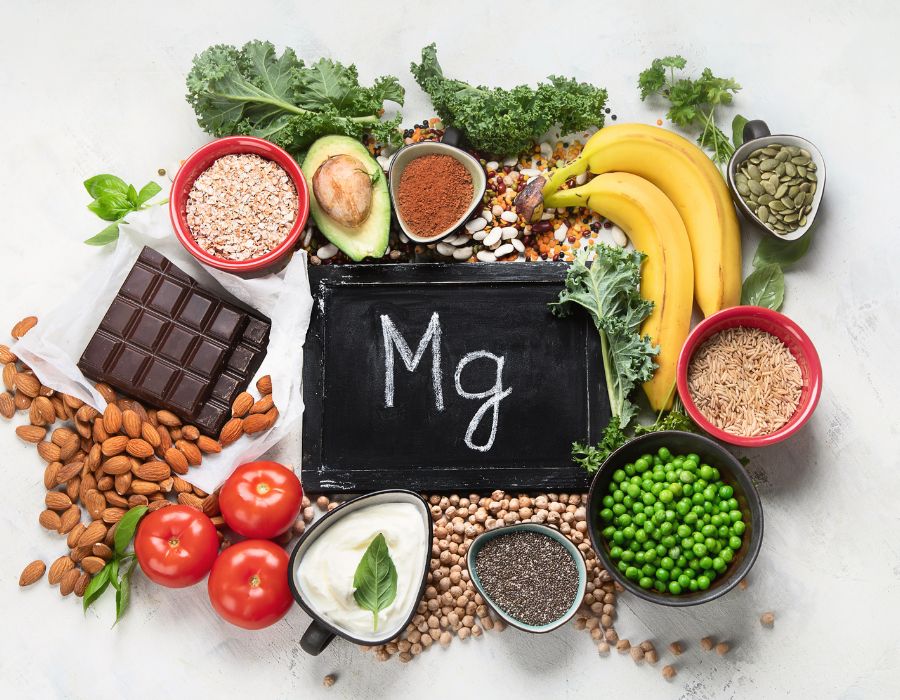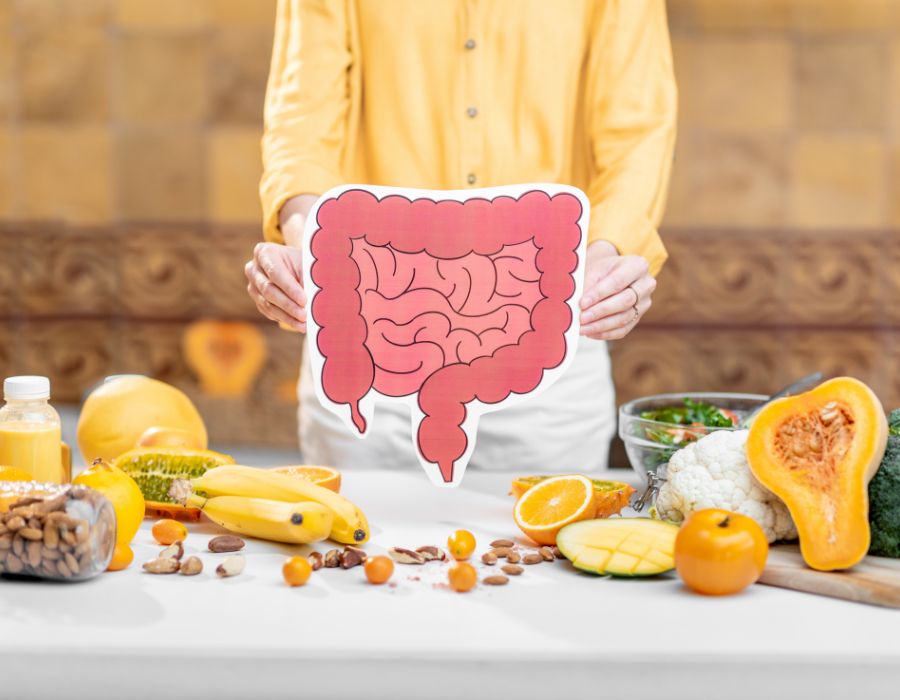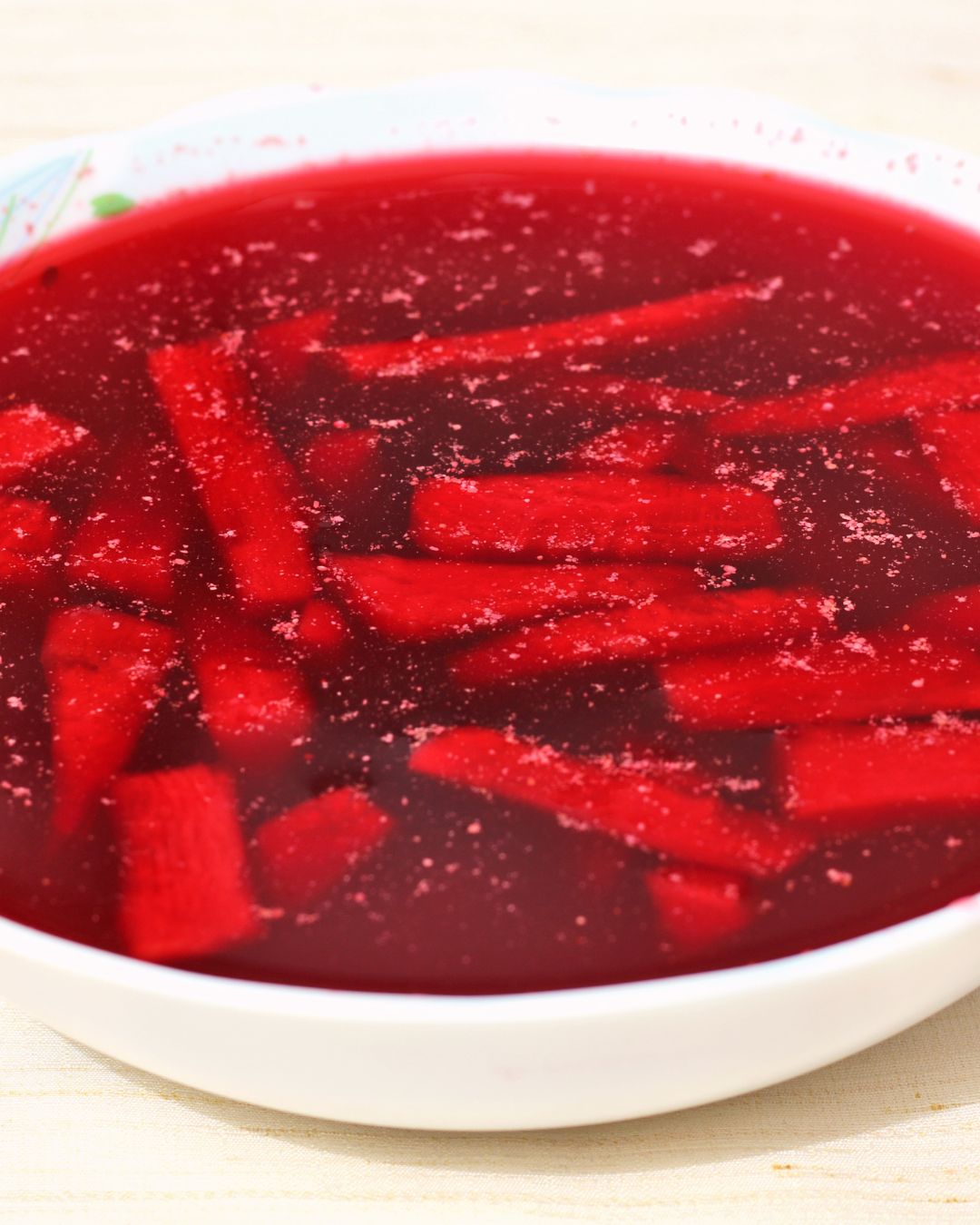Last month, I was sitting in my doctor's office complaining about muscle cramps that kept waking me up at night. After running some tests, she looked at me with a knowing smile and said, "When was the last time you ate spinach or almonds?" That's when I discovered I was among the 45% of adults who don't get enough magnesium in their diet. What followed was a complete transformation of my eating habits and, honestly, my overall well-being. Here is everything about Foods High in Mg.
Magnesium is an essential mineral that acts as a cofactor in over 300 enzyme reactions in your body, regulating everything from muscle contractions and heartbeat to blood pressure and energy production. Yet most of us are walking around magnesium-deficient without even realizing it. The good news? Getting enough magnesium is easier than you think when you know which foods high in mg to include in your daily meals.
In this comprehensive guide, I'll share the 15 most powerful magnesium-rich foods that transformed my health, along with practical tips on how to incorporate them into your daily routine. Whether you're dealing with muscle cramps, low energy, or just want to optimize your nutrition, this article will become your go-to resource for meeting your daily magnesium needs naturally.
What Are Foods High in Mg and Why Do You Need Them?
Foods high in mg are natural food sources that contain significant amounts of magnesium, typically providing 10% or more of your daily value per serving. These include leafy greens, nuts, seeds, legumes, whole grains, and certain fruits that can help you reach the recommended daily intake of 310-420 mg.
When I started tracking my magnesium intake, I was shocked to discover that my typical breakfast of white toast and coffee contained virtually zero magnesium. Compare that to a bowl of oatmeal topped with almonds and banana – suddenly I was getting over 100 mg before 9 AM! This simple swap made me realize how easy it is to miss out on this crucial mineral when we rely on processed foods.
The human body doesn't produce magnesium on its own, making dietary sources absolutely essential. Every cell in your body needs magnesium to function properly, which is why deficiency symptoms can be so widespread and varied. From supporting your immune system to maintaining bone density, magnesium truly is a cornerstone of optimal health.
Top 15 Magnesium-Rich Foods You Should Eat Daily
Nuts and Seeds: Nature's Magnesium Powerhouses
Pumpkin Seeds (150 mg per 1 oz)
I discovered pumpkin seeds by accident when making jack-o'-lanterns with my kids. Instead of throwing away the seeds, I roasted them with a little salt – and unknowingly created the perfect magnesium-rich snack. Just one ounce provides nearly 40% of your daily magnesium needs.
Chia Seeds (111 mg per 1 oz)
These tiny powerhouses have become my morning ritual. I mix two tablespoons into my yogurt, and within minutes they expand into a pudding-like consistency that's both satisfying and loaded with magnesium, fiber, and omega-3s.
Almonds (80 mg per 1 oz)
Raw almonds are my go-to afternoon snack. A small handful not only curbs hunger but provides a solid magnesium boost. I keep a small container in my car for those mid-afternoon energy dips.
Cashews (72 mg per 1 oz)
Creamy and naturally sweet, cashews work perfectly in both savory and sweet dishes. I blend them into dairy-free cream sauces that are secretly nutritious and incredibly satisfying.
Legumes: Protein and Magnesium Combined
Black Beans (120 mg per 1 cup cooked)
Black beans became a weekly staple after I learned they're one of the highest magnesium sources among legumes. I batch-cook them on Sundays and add them to salads, soups, and grain bowls throughout the week.
Edamame (50-60 mg per ½ cup)
These make the perfect TV snack – much better than chips! Fresh or frozen, edamame provides plant-based protein along with a decent magnesium boost.
Lima Beans (81 mg per 1 cup cooked)
Often overlooked, lima beans are creamy and mild, making them perfect for hearty winter stews. They're especially good when cooked with herbs and a bit of olive oil.
Whole Grains: Sustained Energy with Magnesium
Quinoa (118 mg per 1 cup cooked)
This complete protein grain has become my rice replacement. It cooks faster than brown rice and has a nutty flavor that pairs well with everything from roasted vegetables to fresh herbs.
Brown Rice (84 mg per 1 cup cooked)
While it takes longer to cook than white rice, the nutritional payoff is worth it. I cook large batches and freeze portions for quick weeknight meals.
Leafy Greens: The Magnesium Champions
Cooked Spinach (157 mg per 1 cup)
Raw spinach is great, but cooking concentrates the magnesium content dramatically. I sauté a big bunch with garlic and olive oil – it shrinks down to about a cup and provides nearly 40% of daily magnesium.
Swiss Chard (150 mg per 1 cup cooked)
With its colorful stems and earthy flavor, Swiss chard has become my favorite leafy green. The stems take longer to cook, so I start them first, then add the leaves.
Fruits: Sweet Sources of Magnesium
Avocado (58 mg per medium fruit)
Beyond being Instagram-famous, avocados are legitimately nutritious. I eat half an avocado most days – on toast, in smoothies, or just with a sprinkle of salt.
Banana (32 mg per medium fruit)
The perfect portable snack, bananas provide quick energy plus magnesium and potassium. I always keep a few on hand for pre-workout fuel.
Other Powerful Sources
Plain Yogurt (42 mg per 8 oz)
Greek yogurt with some nuts and fruit has become my standard breakfast. It's protein-rich, probiotic, and provides a solid magnesium foundation for the day.
Dark Chocolate 70-85% cacao (64 mg per 1 oz)
This was the best discovery of my magnesium journey – dark chocolate is actually good for you! I keep a high-quality bar on hand and enjoy a square after dinner.
Mineral Water (up to 120 mg per liter)
Some mineral waters are surprisingly high in magnesium. I found a brand that provides about 100 mg per bottle – it's an easy way to boost intake while staying hydrated.
What Are the Health Benefits of Eating Magnesium-Rich Foods?
The benefits I experienced from increasing my magnesium intake were both immediate and long-term. Within two weeks, my muscle cramps disappeared entirely. My sleep quality improved, and I noticed more stable energy levels throughout the day.
Muscle and Nerve Function
Magnesium acts like a natural muscle relaxer. It helps prevent cramps and spasms while supporting proper nerve transmission. Since increasing my intake, I haven't had a single charley horse – something that used to wake me up regularly.
Heart and Cardiovascular Health
This mineral helps maintain a steady heartbeat and supports healthy blood pressure levels. Research shows that higher magnesium intake is associated with lower risk of hypertension and cardiovascular disease.
Bone Health Support
Working alongside calcium and vitamin D, magnesium is essential for bone formation and density. About 60% of your body's magnesium is stored in your bones, making adequate intake crucial for long-term bone health.
Blood Sugar Regulation
Magnesium plays a key role in glucose metabolism and insulin sensitivity. I've noticed more stable blood sugar levels since focusing on magnesium-rich foods, with fewer afternoon energy crashes.
Better Sleep Quality
Magnesium helps activate the parasympathetic nervous system, promoting relaxation and better sleep. My sleep tracker shows deeper, more restorative sleep since improving my magnesium status.
How Much Magnesium Do You Need Daily?
The recommended daily allowance varies by age and gender:
- Women: 310-320 mg per day
- Men: 400-420 mg per day
- Pregnant women: 350-360 mg per day
- Teens: 360-410 mg per day
Despite these clear guidelines, surveys show that nearly half of Americans don't meet their daily magnesium needs. The typical Western diet, heavy in processed foods and light on whole foods, makes it challenging to reach these targets without intentional food choices.
What Causes Magnesium Deficiency?
Several factors can increase your risk of magnesium deficiency:
Dietary Factors
- High intake of processed foods
- Excessive alcohol consumption
- Low consumption of magnesium-rich foods
- Strict dieting or eating disorders
Medical Conditions
- Gastrointestinal disorders (Crohn's disease, celiac disease)
- Type 2 diabetes
- Kidney disease
- Prolonged diarrhea or vomiting
Medications
- Diuretics
- Proton pump inhibitors
- Some antibiotics
- Certain cancer medications
What Are the Signs of Magnesium Deficiency?
Before I improved my diet, I experienced several symptoms that I now recognize as potential magnesium deficiency signs:
Early Warning Signs
- Muscle cramps and spasms (especially at night)
- Fatigue and weakness
- Irritability and mood changes
- Difficulty sleeping or restless sleep
- Headaches or migraines
More Serious Symptoms
- Irregular heartbeat
- Tremors or muscle twitches
- Severe mood changes
- Seizures (in extreme cases)
- Osteoporosis risk
If you're experiencing multiple symptoms, it's worth discussing with your healthcare provider. A simple blood test can help determine your magnesium status, though it's worth noting that blood tests don't always reflect total body magnesium stores.
How Can You Boost Your Magnesium Intake Through Diet?
Start with Simple Swaps
Breakfast Upgrades
Instead of: White toast with jam Try: Whole grain oatmeal with sliced almonds and banana (120+ mg magnesium)
Instead of: Sugary cereal Try: Greek yogurt with chia seeds and berries (80+ mg magnesium)
Lunch Improvements
Instead of: White bread sandwich Try: Quinoa salad with black beans and avocado (200+ mg magnesium)
Instead of: Iceberg lettuce salad Try: Baby spinach salad with pumpkin seeds and cashews (150+ mg magnesium)
Dinner Enhancements
Instead of: White rice side dish Try: Brown rice or quinoa pilaf with herbs (100+ mg magnesium)
Instead of: Regular pasta Try: Whole wheat pasta with sautéed Swiss chard (120+ mg magnesium)
Smart Snacking Strategies
Mid-Morning Options
- Handful of raw almonds (20-25 nuts = 80 mg)
- Chia seed pudding made the night before (111 mg per 2 tbsp seeds)
- Dark chocolate square with coffee (64 mg per oz chocolate)
Afternoon Energy Boosters
- Roasted pumpkin seeds (150 mg per oz)
- Edamame with sea salt (50 mg per ½ cup)
- Banana with almond butter (50+ mg combined)
Cooking Tips to Preserve Magnesium
Steaming vs. Boiling
I learned the hard way that boiling vegetables leaches magnesium into the cooking water. Now I steam or quickly sauté leafy greens to preserve their mineral content.
Minimal Water Method
When cooking grains like quinoa or brown rice, use just enough water to prevent sticking. This prevents minerals from being poured down the drain.
Raw vs. Cooked Balance
While cooking concentrates some nutrients, raw foods preserve others. I aim for a mix – raw spinach in smoothies, cooked spinach in dinner dishes.
Should You Consider Magnesium Supplements?
While I've focused primarily on food sources, supplements can be helpful in certain situations. However, the "food first" approach is generally recommended by nutrition experts.
When Supplements Might Be Appropriate
- Diagnosed magnesium deficiency
- Certain medical conditions affecting absorption
- Medications that deplete magnesium
- Inability to meet needs through diet alone
Potential Supplement Side Effects
- Digestive upset (diarrhea, nausea, cramping)
- Interaction with certain medications
- Risk of overconsumption
I personally found that focusing on magnesium-rich foods was not only more effective but also more enjoyable than taking pills. Plus, whole foods provide additional nutrients and fiber that supplements can't match.
Sample Daily Meal Plan: Meeting Your Magnesium Goals
Here's a realistic day of eating that provides over 400 mg of magnesium:
Breakfast (140 mg magnesium)
- 1 cup cooked oatmeal (60 mg)
- 1 medium banana, sliced (32 mg)
- 1 oz sliced almonds (80 mg)
- 1 cup coffee or tea
Lunch (180 mg magnesium)
- 2 cups baby spinach salad (40 mg)
- ½ cup black beans (60 mg)
- ¼ avocado (30 mg)
- 2 tbsp pumpkin seeds (75 mg)
- Olive oil and lemon dressing
Snack (64 mg magnesium)
- 1 oz dark chocolate (70% cacao)
Dinner (120 mg magnesium)
- 1 cup cooked quinoa (118 mg)
- Grilled chicken or tofu
- Roasted vegetables
Evening (42 mg magnesium)
- 6 oz plain Greek yogurt with berries
Total Daily Magnesium: 546 mg (well above the 320-420 mg recommendation)
Frequently Asked Questions About Magnesium-Rich Foods
Can I Get Too Much Magnesium from Food?
It's extremely difficult to get too much magnesium from food sources alone. Your kidneys efficiently excrete excess magnesium, and whole foods provide magnesium in balanced amounts alongside other nutrients.
Which Foods Have the Highest Magnesium Content?
Pumpkin seeds top the list at 150 mg per ounce, followed by cooked spinach (157 mg per cup) and Swiss chard (150 mg per cup). Chia seeds, almonds, and black beans are also excellent sources.
Do I Need to Eat Magnesium-Rich Foods Every Day?
Yes, since your body doesn't store large amounts of magnesium, consistent daily intake is important. I aim to include at least 2-3 magnesium-rich foods in every meal.
How Long Does It Take to Correct Magnesium Deficiency?
Based on my experience and research, it typically takes 2-4 weeks of consistent adequate intake to notice improvements in symptoms like muscle cramps and sleep quality. More severe deficiencies may take longer to correct.
Can Cooking Methods Affect Magnesium Content?
Yes, boiling vegetables can cause magnesium to leach into cooking water. Steaming, sautéing, or eating raw preserves more of the mineral content.
Key Takeaways: Your Magnesium Action Plan
After months of focusing on magnesium-rich foods, here are the most important lessons I've learned:
Essential Daily Actions
- Include leafy greens in at least one meal daily
- Snack on nuts or seeds instead of processed foods
- Choose whole grains over refined versions
- Keep dark chocolate on hand for a healthy treat
Simple Meal Additions
- Add chia seeds to smoothies or yogurt
- Sprinkle pumpkin seeds on salads
- Use quinoa instead of white rice
- Include beans or lentils in soups and salads
Long-term Health Benefits
Consistent intake of foods high in mg supports muscle function, bone health, cardiovascular wellness, and energy production. The investment in better food choices pays dividends in how you feel every day.
Conclusion
Discovering the power of foods high in mg completely transformed my relationship with nutrition. What started as a quest to eliminate muscle cramps became a journey toward overall better health and energy. The beauty of focusing on magnesium-rich foods is that you're not just addressing one nutrient – you're upgrading your entire diet with whole, nutritious foods.
The 15 magnesium-rich foods I've shared aren't just numbers on a nutrition label – they're real, delicious options that can easily fit into your daily routine. From the satisfying crunch of roasted pumpkin seeds to the creamy richness of avocado, getting enough magnesium doesn't require sacrifice or complicated meal planning.
Remember, nearly half of adults don't get enough magnesium, but you don't have to be part of that statistic. Start with one or two simple swaps – maybe almonds instead of chips, or spinach instead of iceberg lettuce. Small changes compound over time, and your body will thank you with better sleep, fewer muscle cramps, and more stable energy.
Your journey to optimal magnesium intake starts with your next meal. Which magnesium-rich food will you try first?
Sources
- Cleveland Clinic Health Library
- Medical News Today Nutrition Database
- Verywell Health Nutrition Guide
- Health.com Nutrition Articles
- St. Jude Children's Research Hospital Nutrition Resources
- Healthdirect.gov.au Nutrient Information
- GoodRx Health and Nutrition Database










